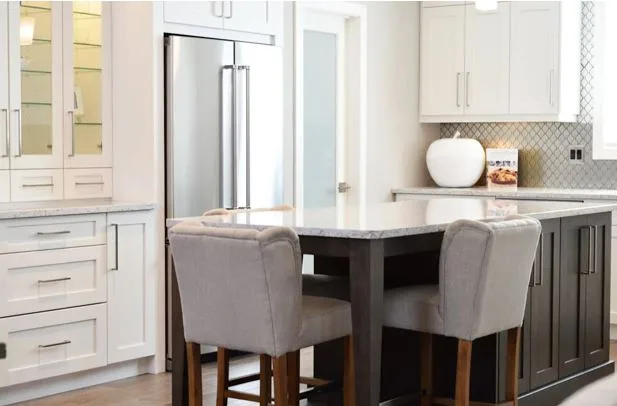Tips for Extending the Life of Your HVAC System
Ever notice how your HVAC only gets your attention when it starts acting up? When it hums along, you forget it exists. But once it groans, rattles, or stops cold in the middle of a heatwave, it becomes the most important thing in your life. In this blog, we will share practical, concrete tips for extending the life of your HVAC system, so you’re not left sweating—or freezing—at the worst possible time.
Don’t Treat Maintenance Like an Afterthought
In an era where cars can update themselves overnight and toasters connect to Wi-Fi, it’s strange how HVAC systems still depend on old-school checkups to stay alive. They don’t send push notifications when the compressor’s struggling. They won’t text you when the filter is clogged. Most people just run the system until something breaks, then panic when the house turns into a sauna or an icebox.
But a modern HVAC system is no different from any other machine—use it constantly without upkeep, and it wears out. Professional maintenance isn’t optional if you want it to last 15 to 20 years. It’s basic math. Clean coils run more efficiently, aligned components draw less power, and lubricated parts experience less friction. You won’t get those benefits from hoping for the best.
A yearly tune-up by a trained tech lets you spot early signs of strain—like low refrigerant, cracked belts, or airflow issues—before they turn into full-blown failures. The upfront cost for maintenance is nothing compared to what you’ll pay for an emergency replacement on the hottest day of July when every technician is booked for a week.
Address Leaks, Don’t Ignore Them
One of the most common—and damaging—issues in aging HVAC systems is refrigerant loss. It’s not always obvious. Sometimes your house just doesn’t cool like it used to. Other times, it takes longer for the system to cycle or the utility bill climbs slowly each month. Left unchecked, this kind of leak doesn’t just reduce performance. It overworks the compressor, spikes energy use, and can take years off your unit’s life.
If you’re wondering what this means for you, consider this: refrigerants aren’t just part of a sealed system that keeps your home cool. They’re regulated substances, and even a small leak can throw off performance, spike energy use, and violate environmental standards. The smart move is to bring in a pro—your guide to a refrigerant leak shouldn’t be guesswork or DIY videos, but a trained technician who can pinpoint issues, test pressure levels, and keep your system running efficiently.
Leaks often happen gradually, making them easy to ignore until something breaks. But ignoring a refrigerant leak means allowing corrosive damage and compressor strain to build until repair isn’t even an option. Address it early, and you save your system, your energy bill, and a lot of unnecessary headaches.
Filters: Cheap to Replace, Expensive to Forget
Air filters don’t get much attention unless you’re dealing with asthma or a dusty home. But they’re quietly doing the work of protecting your entire HVAC system from the kind of buildup that can lead to overheating, mechanical wear, and restricted airflow. Dirty filters choke your system and make everything run harder. That strain shortens the lifespan of fans, blowers, and motors.
Most manufacturers suggest changing filters every 1–3 months, but that’s a baseline. If you have pets, live in a high-pollen area, or spend a lot of time indoors with windows closed, replace them more often. It’s a $15 part that can prevent $500 in repairs. Think of it less as maintenance and more like a monthly subscription to smooth HVAC performance.
Ignoring your filter might not cause a disaster immediately, but it adds hidden wear month after month. And by the time your system starts overheating or short-cycling, you’ve already set it up to fail.
Let Your Thermostat Work the Way It’s Designed
A thermostat isn’t a gas pedal. Pushing it to 65°F in summer doesn’t cool your house faster. It just forces the unit to run at full blast until it hits that mark—burning energy, increasing system load, and speeding up wear. Yet somehow, this myth lives on, and many HVAC units suffer for it.
Smart or programmable thermostats are only useful if you set them properly. Leaving them on “hold” all day defeats the point. So does frequent manual overriding, which keeps the system bouncing between temperature extremes.
Set schedules that align with real-life patterns: slightly higher temps when you’re away in summer, cooler in winter during sleep. You don’t need to overcorrect. Just keep the system in a stable rhythm. That’s how you reduce runtime, ease wear, and get better energy efficiency—without sacrificing comfort.
Watch for Imbalance in Airflow
Not every room in your house should feel like a walk-in freezer or a greenhouse. Uneven airflow usually signals a blockage, leak, or imbalance in the ductwork. It also means parts of your system are working harder than they should just to move air through resistance.
Ducts settle, tear, or shift over time. Registers get closed, blocked by furniture, or accumulate debris. None of these things seem like emergencies, but when airflow isn’t balanced, the system compensates—and overcompensating means more cycling, higher energy draw, and premature mechanical failure.
The fix doesn’t require gutting walls. A qualified tech can pressure test the system, make small adjustments to ductwork, and recommend zoning solutions if needed. Getting air where it needs to go should never feel like a mystery. If it does, your HVAC is probably paying the price.
Think Long-Term, Not Just Seasonal
Treating HVAC like a seasonal tool—only thinking about it during extremes—leads to systems that are always playing catch-up. But with utilities offering rebates, federal efficiency standards tightening, and extreme weather becoming the norm, the way we think about HVAC has to evolve.
A long-lasting system isn’t just about mechanical integrity. It’s about adaptability. Upgrading insulation, sealing windows, and managing airflow aren’t technically part of the HVAC unit, but they reduce its workload significantly. Less effort, fewer cycles, longer life.
And don’t assume lifespan is only tied to age. A system that’s been neglected for 8 years might be in worse shape than a well-maintained one that’s 12 years old. The goal isn’t to avoid replacement forever. It’s to get maximum value from what you already own, without sacrificing comfort or performance.
HVAC systems aren’t flashy, but they’ve become central to how we live. In a world that’s hotter, more unpredictable, and increasingly reliant on stable indoor climates, extending the life of your unit isn’t just smart—it’s essential. Maintenance, attention, and small investments now protect your home from massive inconvenience later. And in a year where supply chain delays are still hitting equipment availability, the best HVAC system is the one you don’t have to replace.






